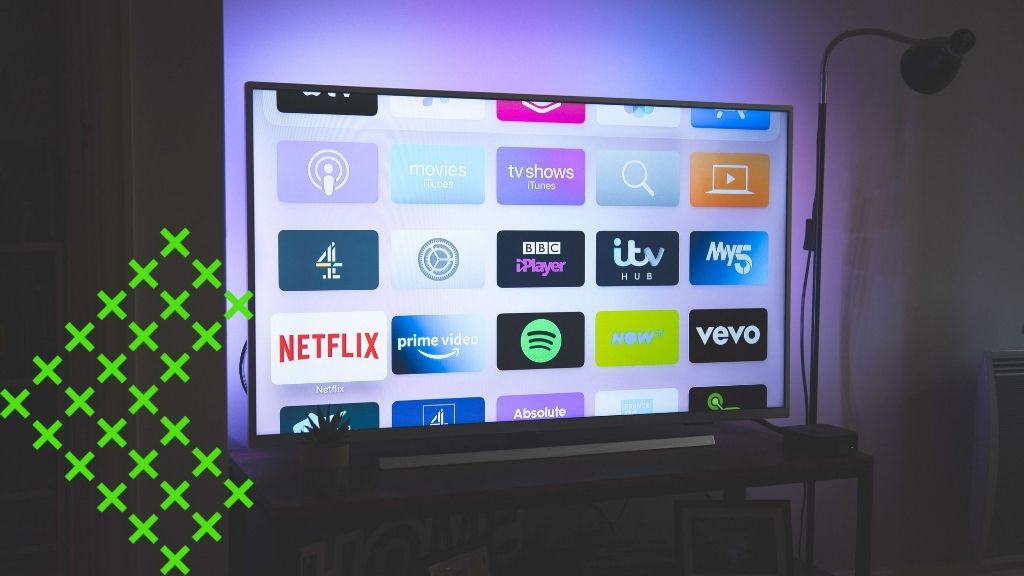3 Key Trends in CTV Advertising
CTV is a hot topic that’s been accelerated since 2020. It’s an excellent way for brands to reach audiences in another way and we explain how.
Index:
- 1. Smart TV is Growing
- 2. Get Closer to Consumers
- 3. First-Party Data is Here to Stay

Remember when cellphones were solely made for making calls or sending text messages? That all changed once it connected to the internet. Now, you can do it all: surf the web, choose from various apps, track your steps and frustrate the elderly because they just want to make a call.
This has happened with TV and has given rise to connected TV (CTV). Once linear TV was plugged into the internet, the TV evolved into a digital fireplace in the living room and disrupted the new attention economy. As a result, CTV is a hot topic and trend that’s been accelerated since 2020, and it’s an excellent way for brands to reach audiences in another way.
Here are three key trends to consider with the rise of CTV advertising:
1. Smart TV is Growing
Many people decided to upgrade their TV after staring at it for so long. That’s why companies like Samsung and others have experienced a massive bump in sales since 2020. At the end of 2020, 34% of global households owned a smart TV. Smart TV sales grew by 7.4% in 2020, and 51% of households worldwide will own a smart TV by 2026. That’s 1.1 billion homes.
With smart functionality no longer a differentiator, many smart TV manufacturers choose between maintaining their own software and application ecosystems or licensing a third-party software platform. Either way, several brands are looking to capitalize on the fast-growing connected TV advertising business.
2. Get Closer to Consumers
Linear TV is the best way to build a brand. And as of now, nothing comes close to it. Still, initial data from last year found that streaming video (including SVOD and AVOD) accounted for 26% of all viewing which was slightly more than broadcast TV, which came in at 25%. Cable TV (ad-supported and premium pay) had the highest audience share at 39%. If, however, you include mobile phones, the majority of the audience share would probably be streaming video content.
By having metrics on total viewers, broadcast day and time, and demographic and market breaks such as territory, household, income, and more, you get a better understanding of who consumers are and how they behave. This creates rich, first-party data.
3. First-Party Data is Here to Stay
CTV has given us access to valuable first-party data. More advanced targeting and measurement capabilities will allow advertisers to reach new audiences and expand their reach in new ways. For example, brands can see and observe how much time is spent on a game vs. a social media app by using first-party deterministic data. As the third-party cookie will soon become obsolete and features such as the iOS 14.5 transparency tracking limit specific data, access to first-party data will be essential for brands and advertisers. With first-party deterministic data, a direct relationship with consumers and an overall better user and navigation experience can be created.
The emergence of internet-connected TV has disrupted the new attention economy. With so many choices, it’s crucial to stand out from the rest to reach consumers. In addition, accessing new applications and platforms has created a new type of fragmentation. Thus, knowing how to reach your audience in new ways will be critical.
 Data Monetization (in a Privacy-first World) for Publishers
Data Monetization (in a Privacy-first World) for Publishers
 Stop 3rd-Party Cookie Deprecation From Impacting Revenues
Stop 3rd-Party Cookie Deprecation From Impacting Revenues
 How Publishers Can Keep Up with Digital Advertising Privacy Changes
How Publishers Can Keep Up with Digital Advertising Privacy Changes